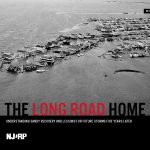New Jersey Future Blog
Report: Few Escape Negative Impacts of Sprawl
June 20th, 2003 by Tim Evans
- Nearly a third (30 percent) of New Jersey’s population lives in large cities and other “distressed” communities, characterized by decaying infrastructure, declining tax bases, and rising social needs.
- Another 25 percent lives in “at-risk developed” municipalities: places with no more room to develop that now lag the rest of the state in job growth and per-capita property tax base.
- Another 25 percent of New Jersey residents live in “bedroom-developing” suburbs, whose rapid population growth is outstripping their ability to provide needed infrastructure and services.
- Only 9 percent of the state’s population lives in “affluent” communities, characterized by high property values, plentiful commercial development and jobs, relatively low tax rates, and very few social strains.
CONFERENCE TO MOBILIZE STATEWIDE VICTIMS OF SPRAWL
New Jersey’s current pattern of growth creates negative consequences for all municipalities, not just our older urban areas.
Such is the conclusion of “New Jersey Metropatterns,” a report recently released by the national research firm Ameregis and commissioned by the New Jersey Regional Coalition, a consortium of nonprofit and community-based organizations, including New Jersey Future.
On Friday, June 27, Ameregis President Myron Orfield and nationally known experts in housing and taxes will discuss the report’s implications for communities of all types, and for New Jersey as a whole, at the People’s Summit for Regional Equity in New Brunswick. This statewide conference brings together state policy experts with grassroots and faith-based organizations, many of whose constituents will be hearing this message for the first time.
The report’s analysis separates New Jersey’s municipalities into eight categories and then details the development issues facing each group. For example, “at-risk developed” communities (e.g., West Orange, Piscataway, Cherry Hill) confront stagnant or declining per capita property tax bases and aging infrastructure and housing stock, as new development appears farther out in the fringe. And while today the rapidly growing “bedroom-developing” suburbs (e.g., Readington, Jackson, Mount Laurel) struggle to meet burgeoning infrastructure and service needs, they may ultimately face the same future as the at-risk developed places (which in turn follow the path of the “distressed” communities) if state policies continue to favor building new while neglecting the old.
The report’s authors offer four broad recommendations to end the cycle of outward growth and disinvestment: 1) greater tax equity to equalize resources among local governments; 2) regional land use planning, particularly greater implementation of the State Plan; 3) greater housing choice, including an overhaul of the state’s affordable housing rules; and 4) institutional reforms that would encourage local governments to cooperate on regional and statewide goals.















